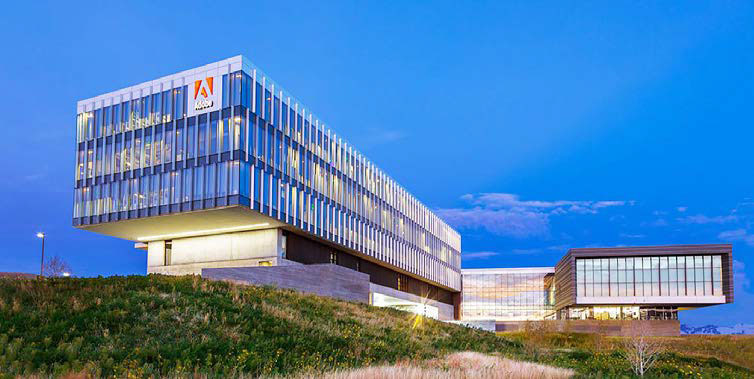Brice Wallace
Back at the turn of the century, then-Gov. Michael Leavitt envisioned an Engineering and Computer Science Initiative to educate more Utahns in those fields and help Utah companies with their workforce needs. A new report indicates that his push, backed by the Legislature and the state’s higher education system, has worked, prompting an upswing in those graduates.{mprestriction ids="1,3"}
Still, however, the huge number of open jobs at Utah companies has outpaced that growth.
“If you look at the growth in the tech economy, it pretty much directly tracks the number of graduates that we’ve been producing,” Richard Brown, dean of the University of Utah’s College of Engineering, said at a media roundtable discussion following the release of a report on the topic by the Kem C. Gardner Policy Institute.
“Of course, Utah does import a lot of engineers and computer scientists from outside the state because we still aren’t graduating nearly enough to meet the needs of our own Utah companies.”
The Gardner report indicates that from 2000 to 2020, growth in Utah engineering employment outpaced growth in U.S. engineering employment by more than fivefold. The state’s computer science employment over this same period outpaced the nation by more than double.
The report shows that the state’s engineering and computer science workforce in 2020 included 238,400 full- and part-time jobs, had $19.1 billion in earnings and contributed $25.2 billion in GDP, representing between 12 percent and 15 percent of Utah’s $200 billion economy.
Meanwhile, the eight higher education institutions in the study saw the number of new engineering and computer science graduates balloon from 1,540 in 2000 to over 3,700 in 2020. They have helped meet the needs of companies in the tech-focused Silicon Slopes, an area of Utah where 40 percent of the state’s job growth has occurred since 2010.
“It’s striking how impactful engineering and tech talent has become to Utah’s economic well-being, and I can see that degrees and jobs in these fields can really be an opportunity for people of all races, ethnicities and genders,” said Levi Pace, senior research economist at the Gardner Institute and lead author of report.
Despite those degree increases, Utah tech companies typically have 3,000-5,000 open positions, according to Cydni Tetro CEO of Brandless Inc. and founder and CEO of the Women Tech Council. She said that both when the engineering initiative started and today, Utahns’ skill sets cannot fill those open jobs.
“It is imperative that the generation coming up gets inspired to go solve the world’s problems through technology, get an education, jump into our system, get the skills, the certificates — whatever the pathway is — in order to fill these 3,000 to 5,000 jobs at any given time that really drive the economic engine,” Tetro said. “Because if we can’t fill them, then they go elsewhere.”
Steve Price, founder of Price Development Co. and a UofU trustee, said Utah’s economy in 2000 was focused on tourism, mineral extraction and agriculture. But since then, it has diversified, and he stressed that engineering and computer science degrees are “nutrients” to the state’s economy.
“If we don’t have the place to help grow this and future generations of engineers, we just can’t continue to propel — and I think that’s the word, ‘propel’ — the Utah economy in the way that we have in the past,” Price said.
“The thing that we often talk about in the tech community is that in today’s world, every job is getting powered by technology, and we don’t see that changing,” Tetro said. “So, if we see that 40 percent [increase in total Utah jobs] for the past decade, it is dramatically going to continue to increase for the coming decade. And what that means is that we have to enable our workforce.”
The Utah Department of Workforce Services projects the state’s engineering and computer science workforce will grow at 3.1 percent per year through 2028, nearly one percentage point above Utah’s average annual employment growth in other occupations. The agency anticipates the creation of 23,160 jobs (6,320 in engineering and 16,840 in computer science) over 10 years, more than one-third of 2018 baseline employment levels in the two fields. Those projections are for employee jobs, not self-employment.
Tetro said the Gardner report can become a road map for the state’s future.
“I think from this, we start architecting a road map for the next jump up in graduates, and I think we have to architect new pathways into the tech ecosystem for many people who are either re-entering the workforce, who come from nontraditional educational paths, or who come from underrepresented communities where there just hasn’t been this natural culture that’s brought them along,” she said.
The Gardner report also shows:
• Engineering employment between 2000 and 2022 rose by 124.6 percent in Utah, compared with only 23 percent in the U.S., while computer science employment experienced a 122.8 percent increase in Utah compared with a 56.2 percent increase in the U.S.
• Utahns with engineering jobs made an average of $96,600 in wages in 2020, and computer science workers earned $89,500. That is 80 percent and 66 percent, respectively, higher than the $53,800 state average.
• Compared with their wages one year after degree completion, engineering and computer science graduates employed in Utah earn 31 percent more after four years and 59 percent more after eight years.
• In fiscal year 2021, the University of Utah, Utah State University and Brigham Young University combined to account for $175.7 million of the $183 million of engineering and computer science research awards to the state’s eight universities and colleges. The UofU received grants and contracts worth $105 million for engineering and $26.5 million for computer science, approximately three-fourths of the total research funding.
The full report is available at https://gardner.utah.edu/wp-content/uploads/ECS-Report-Oct2022.pdf.{/mprestriction}








